35th anniversary: The fall of the Berlin Wall in photographs
House librarian Tizane Navea-Rogers digs through The Independent’s photography archive and revisits the final days of the Berlin Wall
Your support helps us to tell the story
From reproductive rights to climate change to Big Tech, The Independent is on the ground when the story is developing. Whether it's investigating the financials of Elon Musk's pro-Trump PAC or producing our latest documentary, 'The A Word', which shines a light on the American women fighting for reproductive rights, we know how important it is to parse out the facts from the messaging.
At such a critical moment in US history, we need reporters on the ground. Your donation allows us to keep sending journalists to speak to both sides of the story.
The Independent is trusted by Americans across the entire political spectrum. And unlike many other quality news outlets, we choose not to lock Americans out of our reporting and analysis with paywalls. We believe quality journalism should be available to everyone, paid for by those who can afford it.
Your support makes all the difference.One November night 35 years ago, the Berlin Wall cracked and thousands of Berliners poured through. The Iron Curtain had already started to tremor by this point: travel restrictions were easing in Hungary and Czechoslovakia and mass protests had erupted across Eastern Bloc countries. The Soviet grip was loosening. But no one expected what would happen that night.
One surprise announcement by an East German official and suddenly crowds of Berliners rushed to the wall’s checkpoints, hoping for a chance to cross. The border guards, overwhelmed and unprepared, opened the gates – allowing people to pass freely for the first time in 28 years. What began as confusion soon turned to celebration as Berliners from both east and west flooded the streets, chipping away at the wall and reclaiming their city.
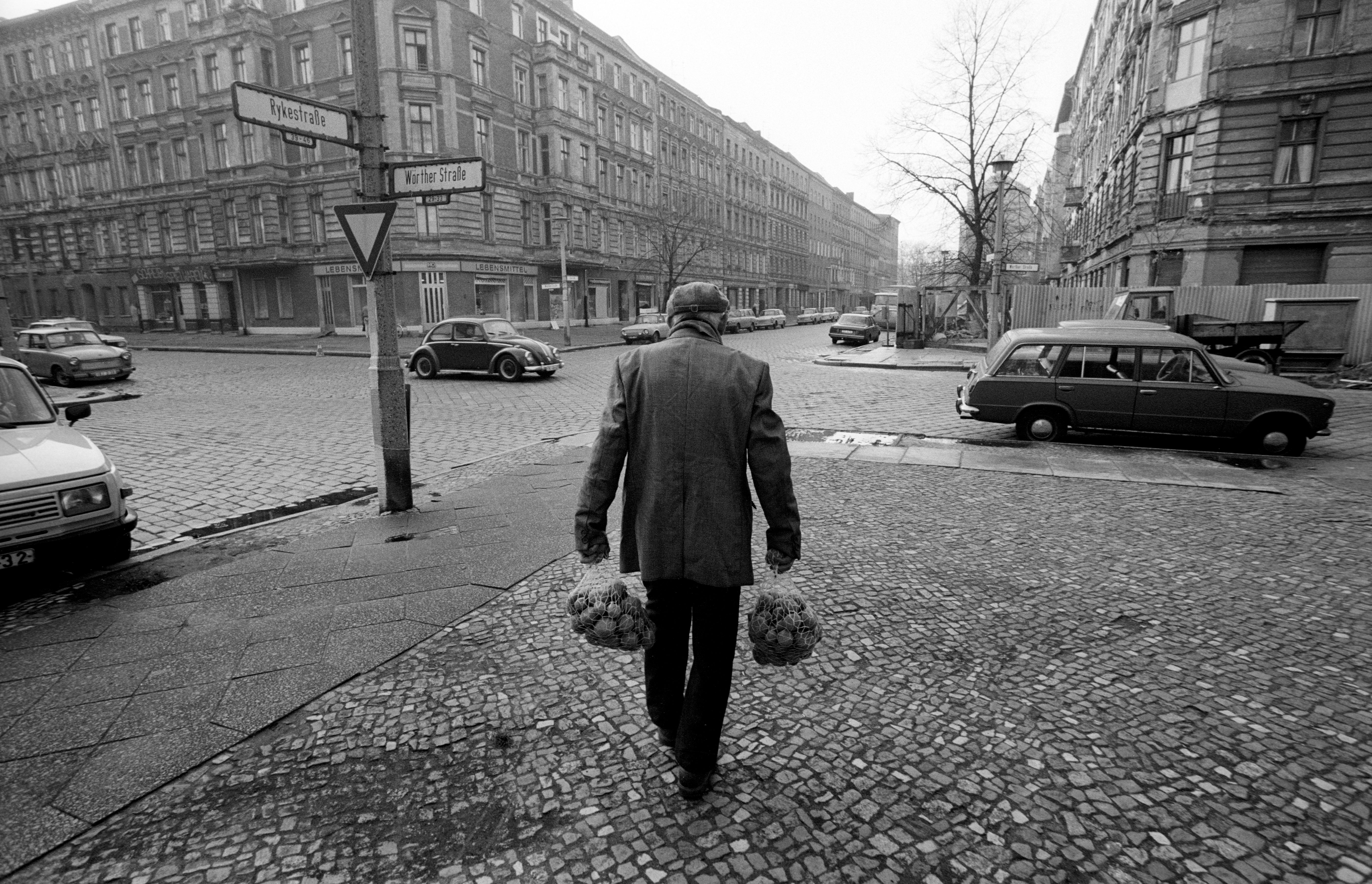
Photographer Brian Harris was in Berlin at the time and captured the watershed moment on camera. The Independent had sent Harris there a few days earlier, spending the prelude before the fall photographing street scenes in East Berlin. Harris later reflected, “I was wandering around nervously with just one camera, trying not to look like a photographer.”
One quiet moment Harris captured was of an elderly man in East Berlin, carrying shopping bags filled with potatoes, just two days before the wall fell. “He would have been 65-70, a war veteran”, Harris recounted. Avoiding any photographs of queues – strictly off limits in East Germany at the time – Harris chose to capture the man walking away, his back to the camera with bags in hand. “Being photographed made his day,” Harris later recalled.
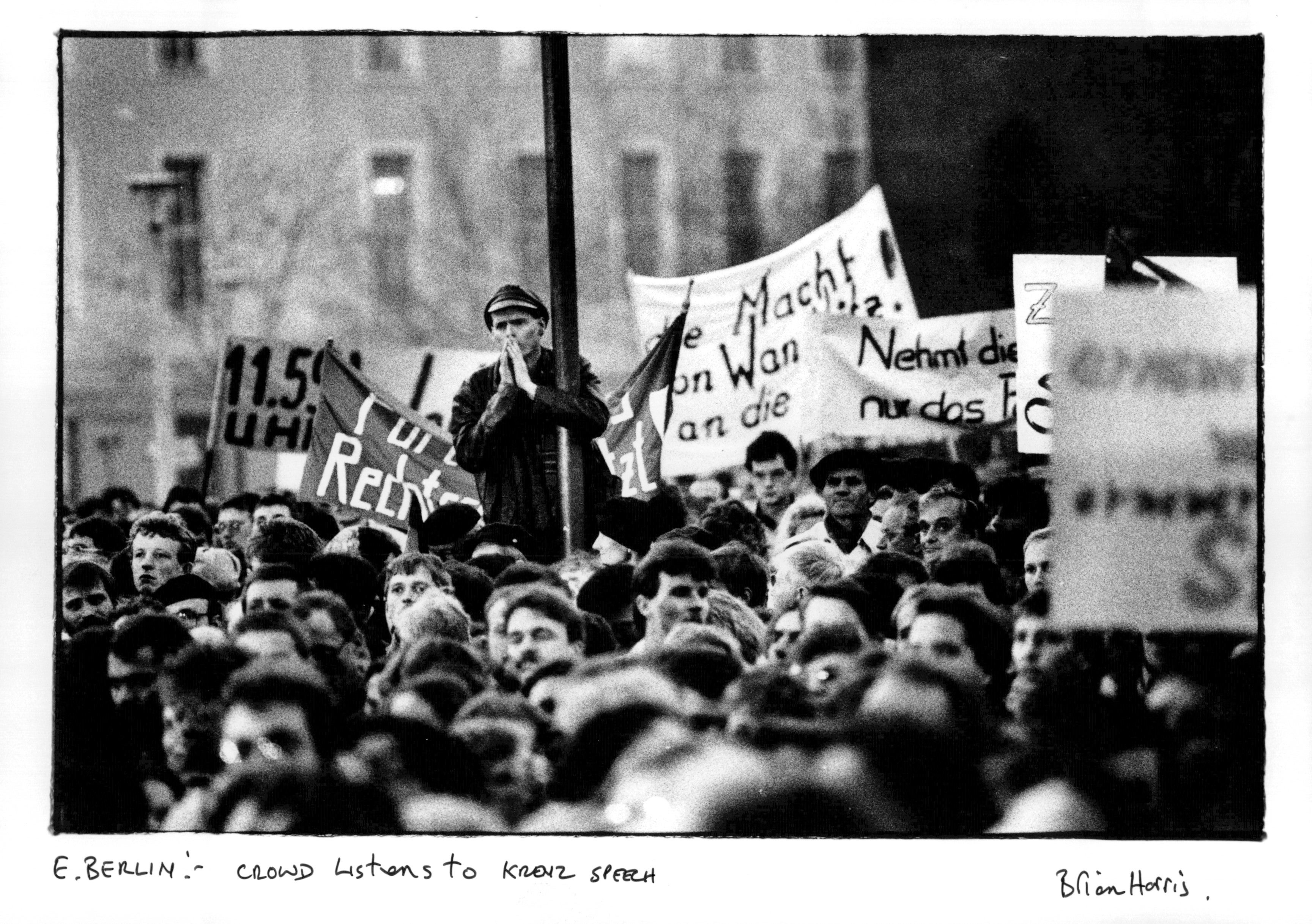
In another photograph, Harris shows crowds gathered in East Berlin, listening to a speech by Egon Krenz, the last communist leader of East Germany. In the months before the wall fell, massive pro-democracy protests had broken out across East Germany. By November, calls for reform and greater freedoms had grown louder and more urgent. One such protest in East Berlin, on 4 November, drew more than half a million people to Alexanderplatz.
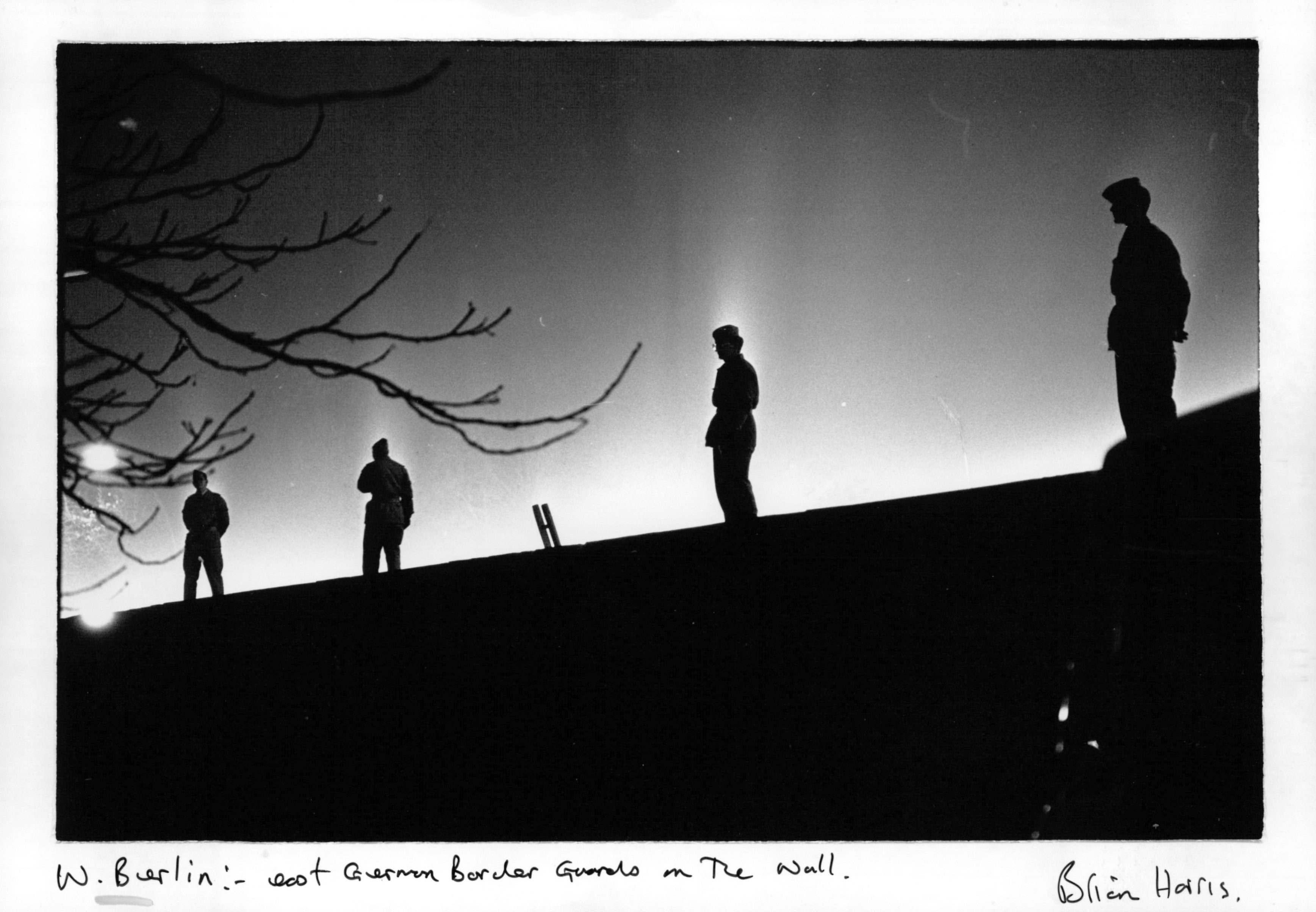
Harris initially felt uneasy photographing some of these early scenes in East Berlin, “You knew you were being watched,” he said, “coming out of the only five-star hotel in town, you knew you had a tail”.
But things were soon to take a dramatic turn. Late on 9 November, Harris received a call from then-editor of The Independent, Andreas Whittam Smith – the wall was about to come down. At around 10.30pm, Harris caught the first breach of the Berlin Wall on camera at Eberswalder Strasse. In this image, East German border guards are seen standing in the “Death Strip”, seemingly unsure of what to do next, as curious East Berliners look through the crumbling gap.
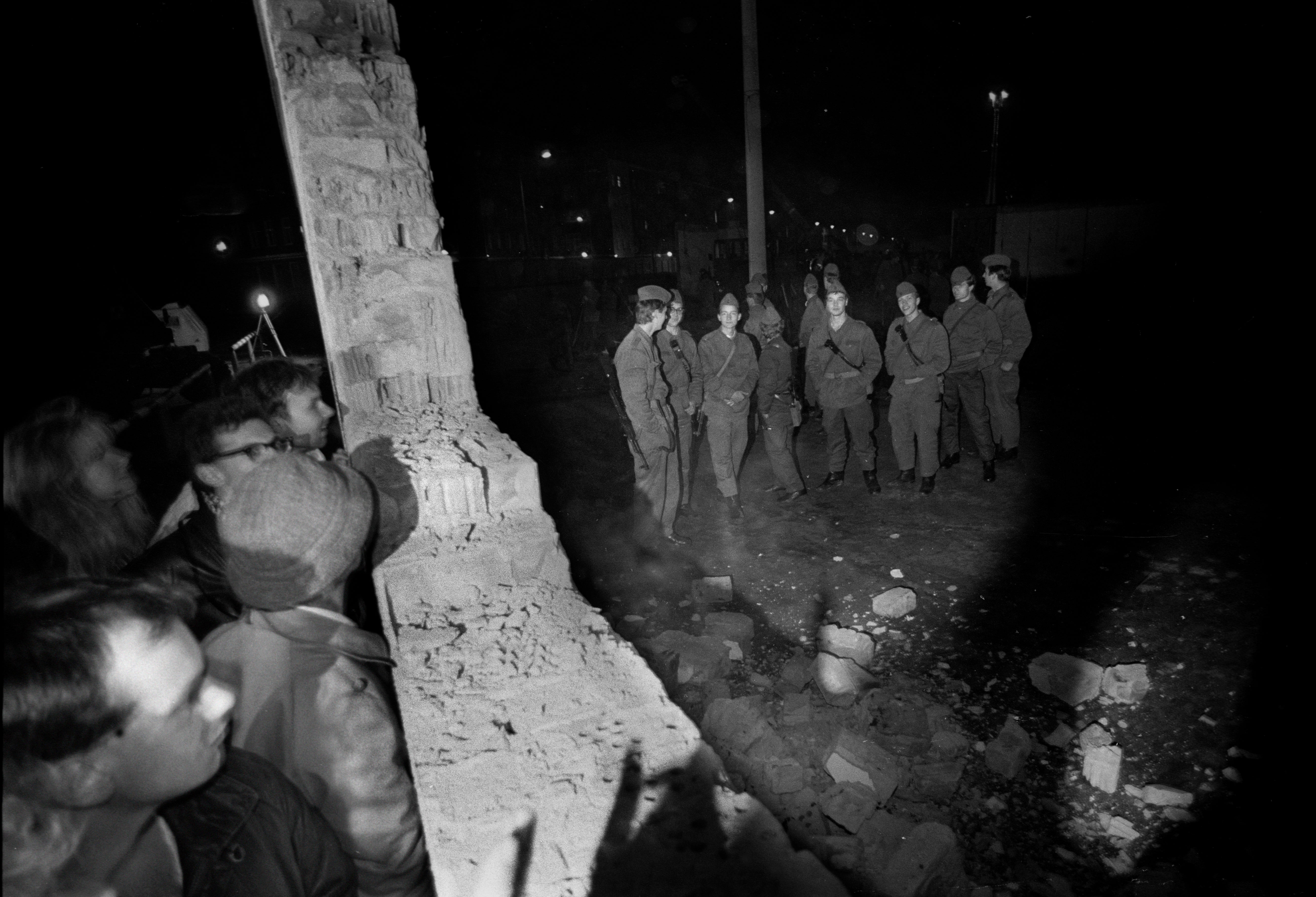
Harris had his winning shot but was blocked from crossing back into West Berlin. The wall was literally being prised apart but, Harris didn’t have the correct papers, and Soviet bureaucracy proved unrelenting. Instead, he found a vantage point in a nearby tree and watched as the events of the night unfolded.
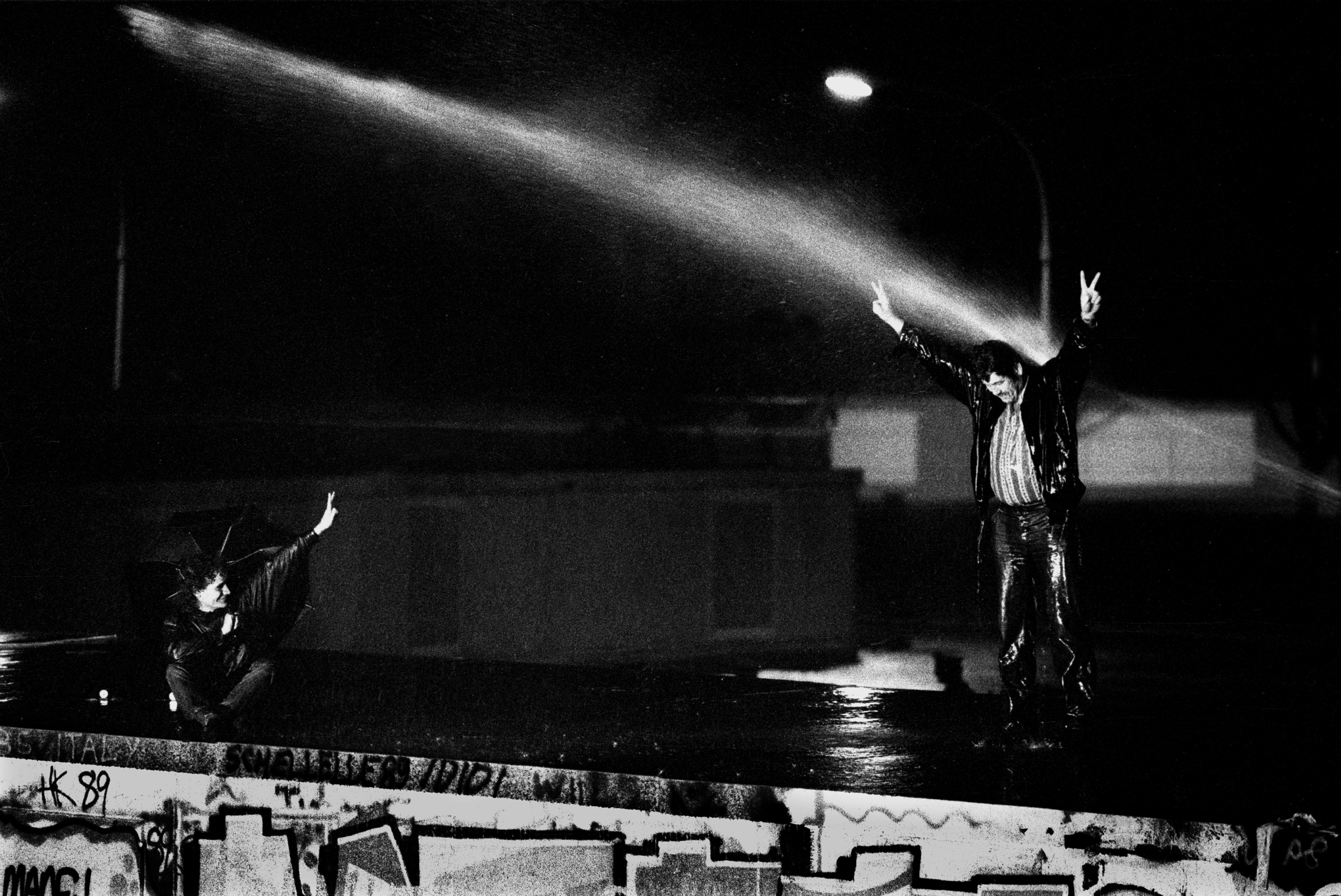
It wasn’t long before crowds had scaled the wall at the Brandenburg Gate. Berliners started taunting the East German guards still present, who tried to hose them down. From his nearby tree, Harris photographed a defiant man atop the wall, completely soaked but gesturing peace signs to the crowd. Nearby, another man grins, trying to shield himself from the blasts of water with his umbrella.
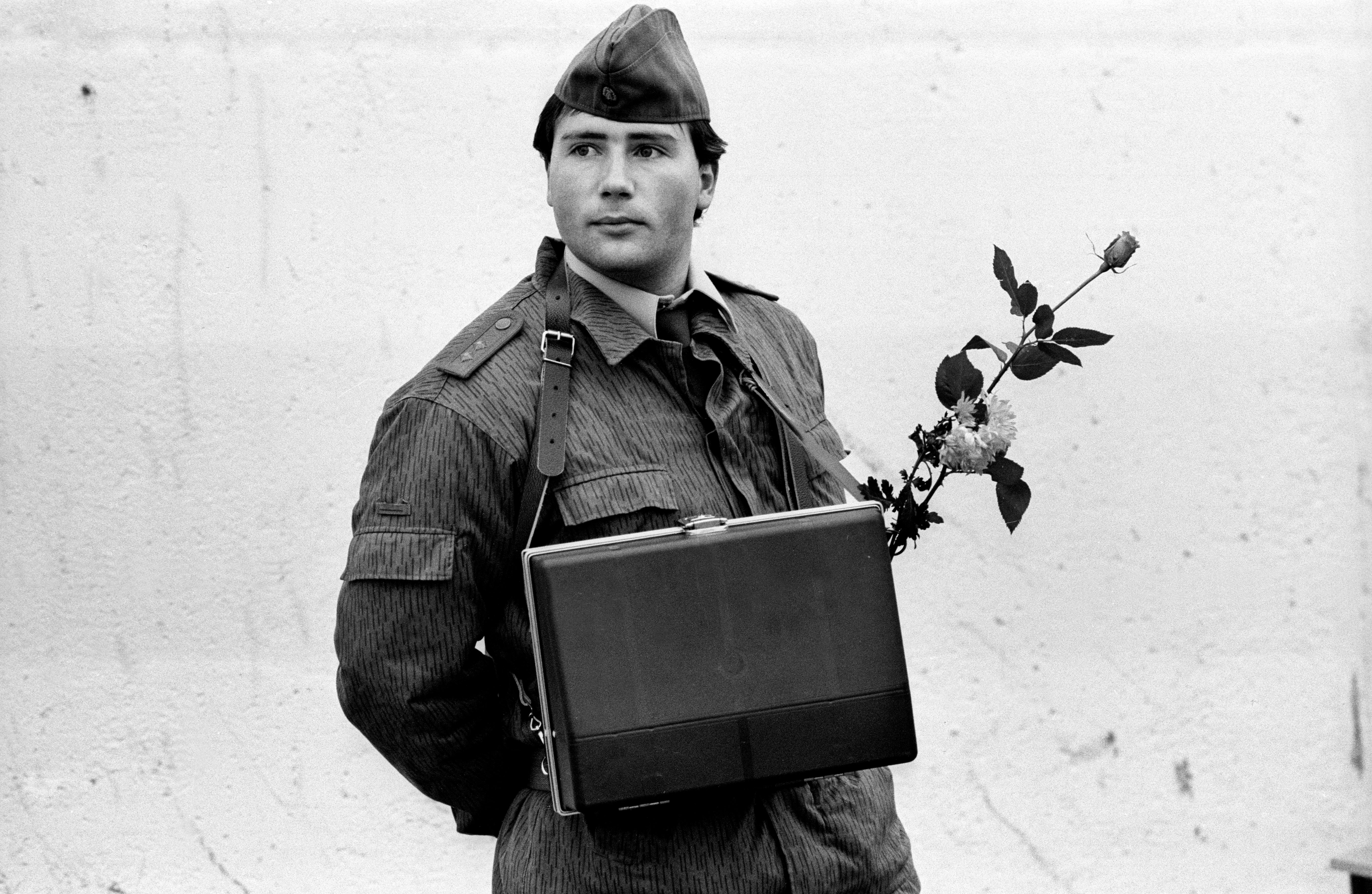
People continued to join the crowds into the early hours of the morning. Among them was a young man named Stephen Ellery, a music student living in Krakow who often travelled to East Berlin. On the morning of 10 November, he was crossing into East Berlin on his way back to Krakow. But “instead of orderly queues of people showing their papers at the border”, Ellery saw “East Germans streaming through, hugging and crying”.
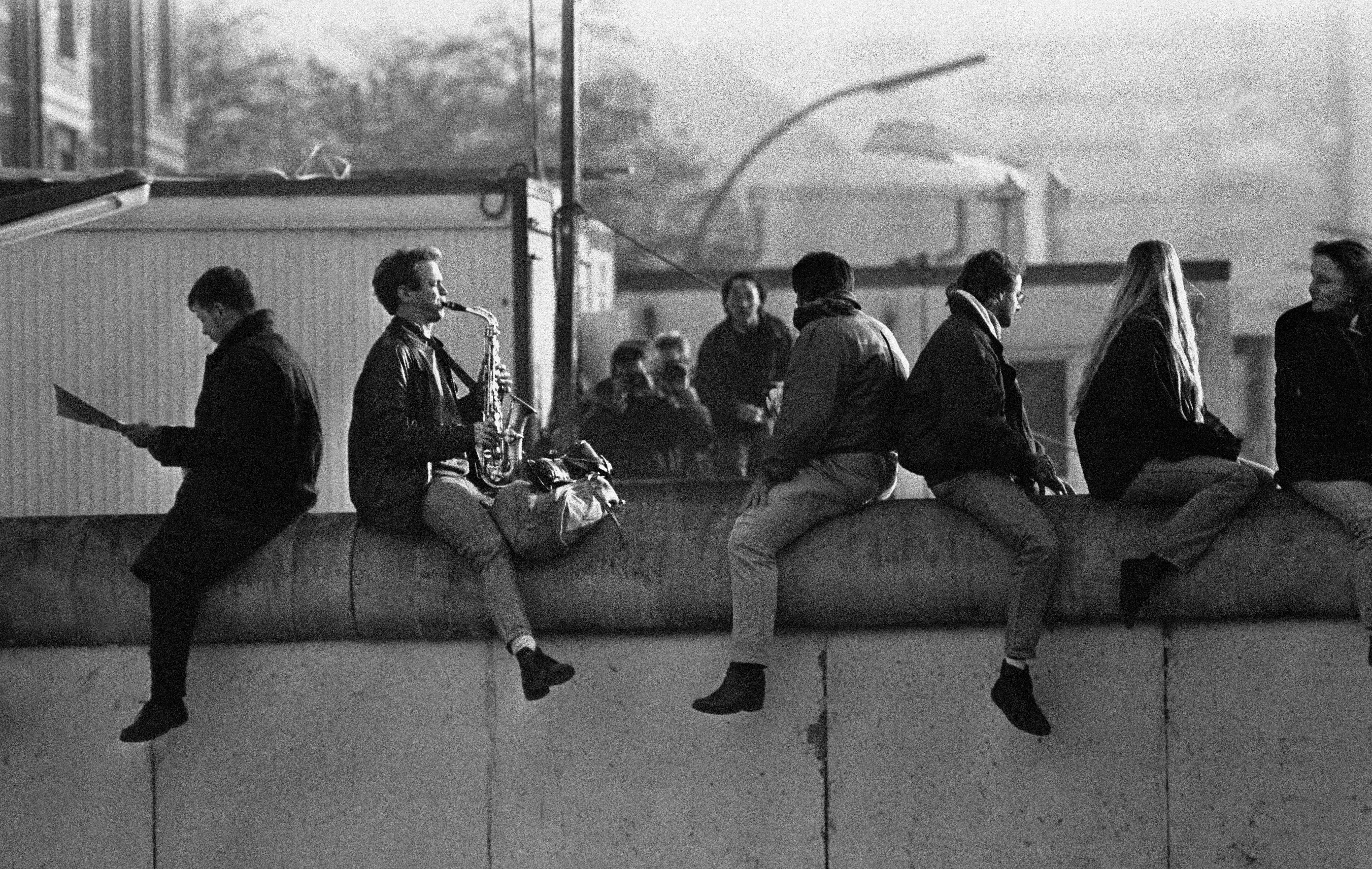
Ellery spotted Berliners celebrating with champagne and beers atop the wall, so he joined them. “I always had my sax with me, so it seemed natural to get it out”, he later recounted. Over a month later, his father spotted a photograph of his son playing the saxophone in a supplement of The Independent.
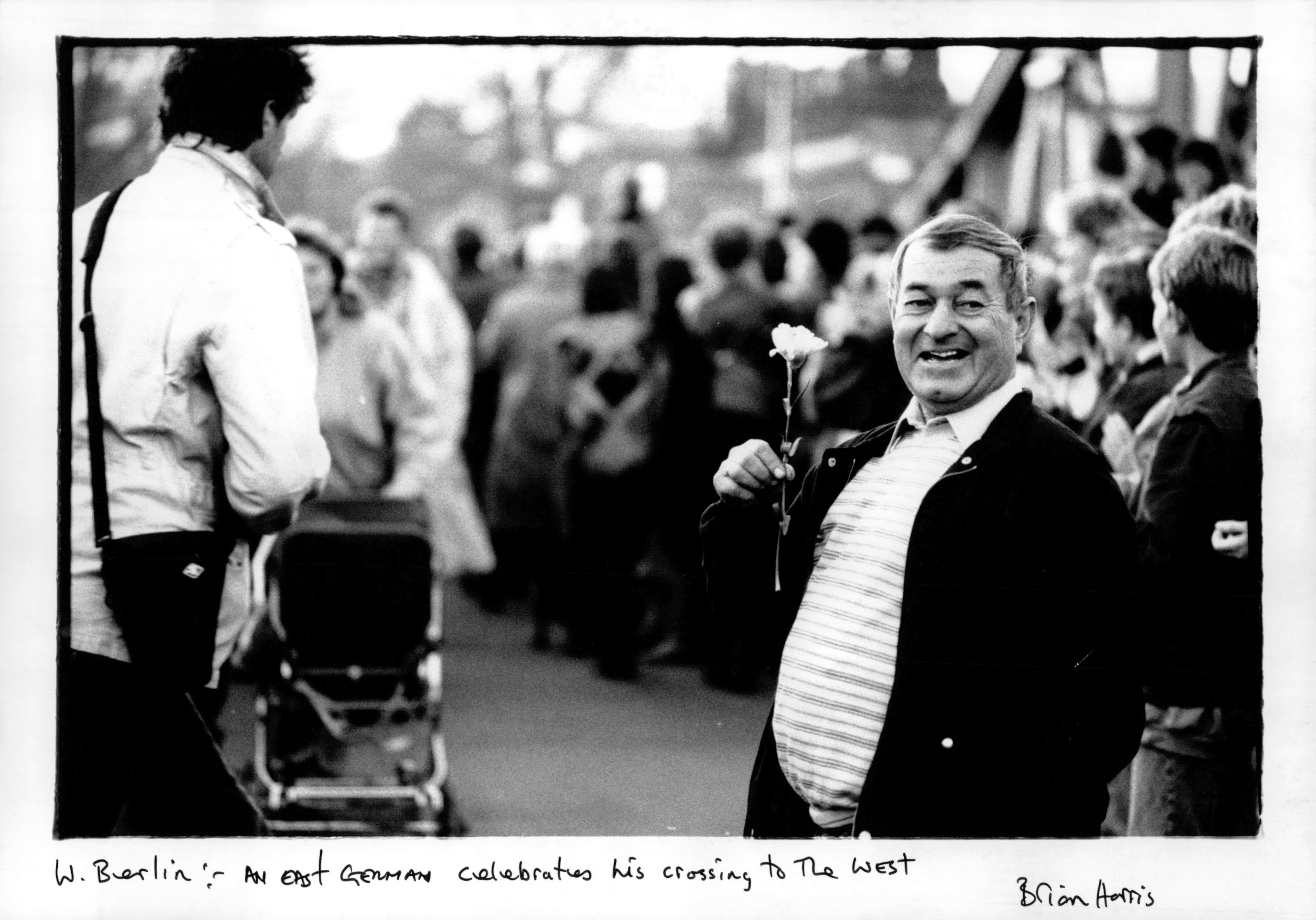
In the days that followed, Berliners continued to stream through the checkpoints. Some were photographed clutching chucks of cinder blocks that had been prised away from the wall.
Here, Harris’s images depict jubilant scenes of Germans crossing the border, many visibly overwhelmed with emotion. One man crossing into West Berlin is seen cheerfully holding a flower; elsewhere a woman grins while holding two pieces of the wall.
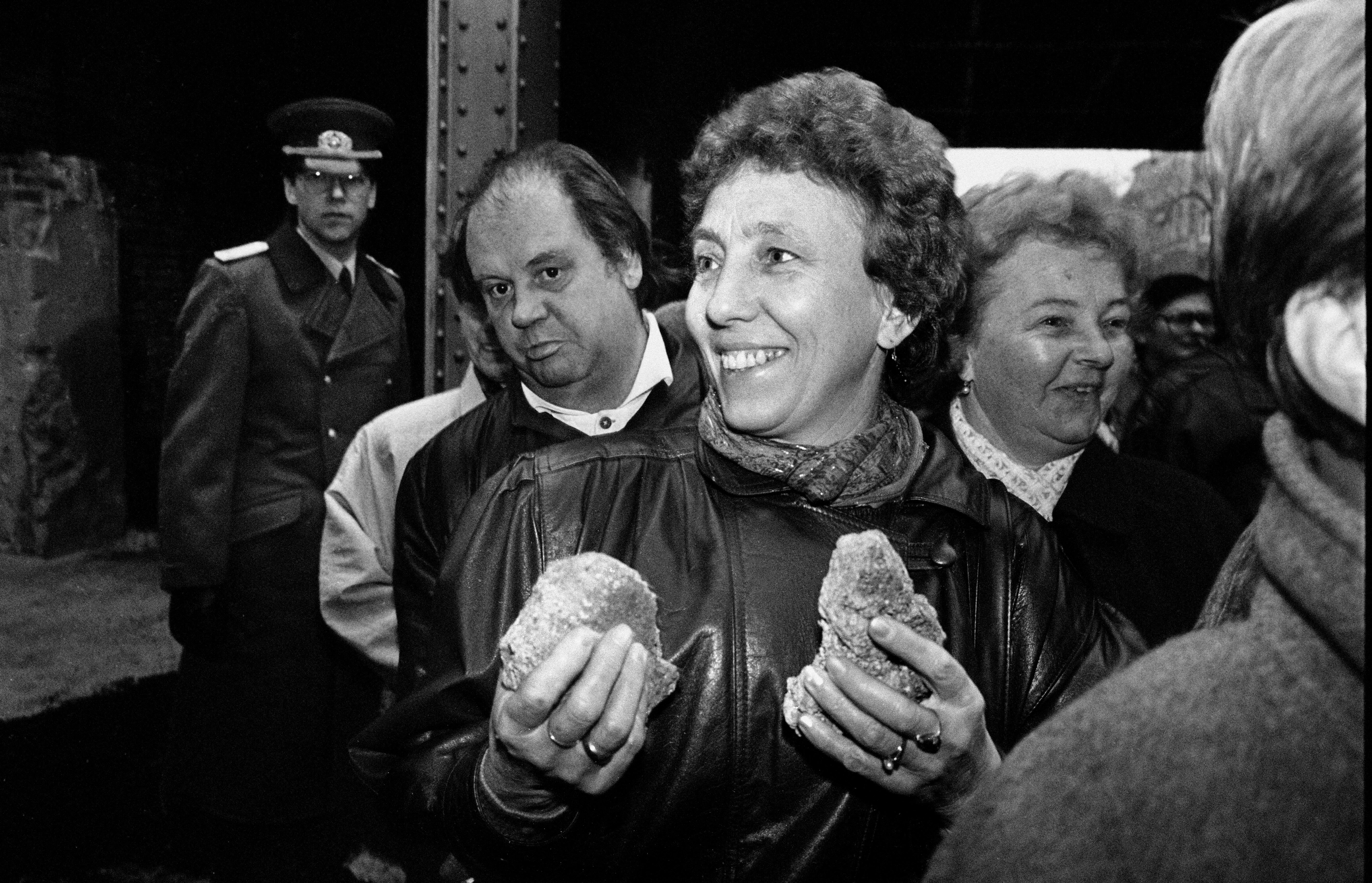
The wave of change that had already defined 1989 was far from over. The Czech government fell a few weeks later in what became known as the Velvet Revolution, while Romanian protests culminated in the fall and brutal execution of communist leader Ceausescu. The following year, Latvia, Lithuania and Estonia all broke away from the Soviet Union. By 1991, the USSR was over.
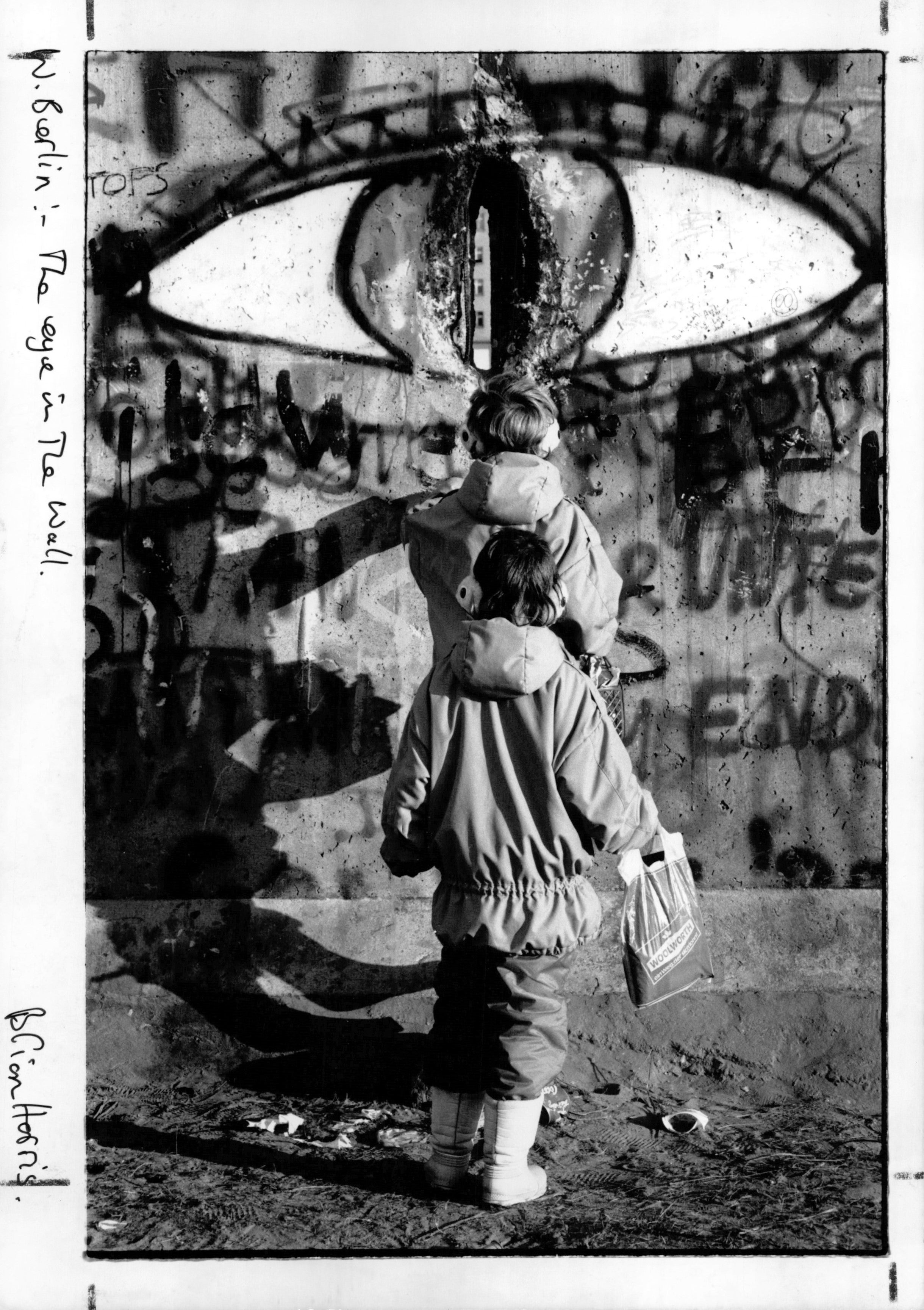
Meanwhile, in the years that followed, Berlin underwent a transformative effort to reunify and rebuild. Brian Harris was one of the few who had a front-row seat to the historic events that unfolded 35 years ago. Through his lens, Harris captured the emotional intensity and energy of the crowds, told in real-time as the wall crumbled and borders dissolved. Together, this work offers a first draft of history – a watershed moment in Germany’s journey to reunification.

Join our commenting forum
Join thought-provoking conversations, follow other Independent readers and see their replies
Comments